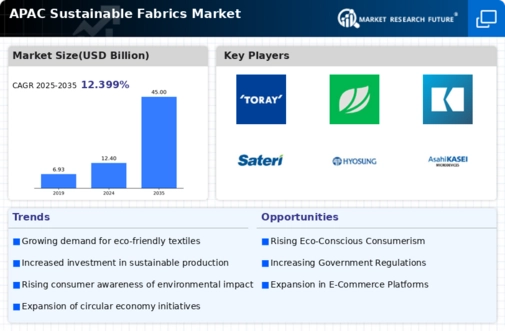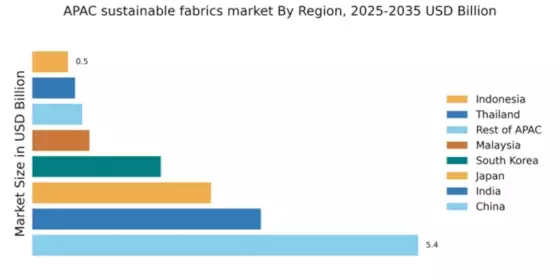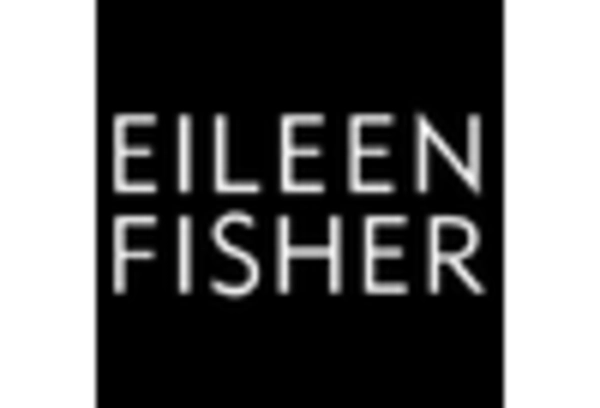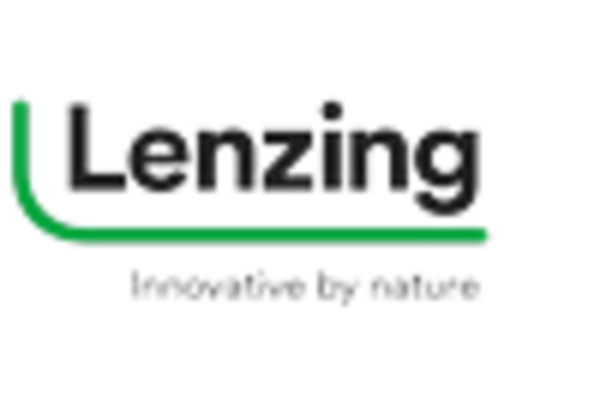China : China's Dominance in Eco-Fabrics
China holds a commanding 5.4% market share in the sustainable fabrics sector, driven by increasing consumer awareness and government support for eco-friendly initiatives. The demand for sustainable textiles is surging, particularly in urban areas, as consumers prioritize environmental impact. Regulatory policies, such as the Green Manufacturing Initiative, are fostering innovation in sustainable production methods, while significant investments in infrastructure are enhancing supply chain efficiency.
India : India's Growing Sustainable Fabric Demand
With a market share of 3.2%, India is rapidly becoming a hub for sustainable fabrics, driven by a young population and rising disposable incomes. The demand for organic and recycled materials is on the rise, supported by government initiatives like the National Policy on Textiles. The textile industry is also witnessing a shift towards sustainable practices, with many manufacturers adopting eco-friendly technologies to meet consumer expectations.
Japan : Japan's Unique Fabric Innovations
Japan's sustainable fabrics market, valued at 2.5%, is characterized by a blend of tradition and innovation. The country is witnessing a growing trend towards sustainable fashion, with consumers increasingly favoring brands that prioritize eco-friendly practices. Government policies, such as the Circular Economy Promotion Law, are encouraging sustainable production methods, while advancements in technology are enabling the development of innovative materials.
South Korea : South Korea's Eco-Conscious Consumer Base
South Korea holds a 1.8% market share in sustainable fabrics, driven by a strong consumer preference for eco-friendly products. The government is actively promoting sustainability through initiatives like the Green New Deal, which aims to reduce carbon emissions in the textile sector. Urban centers like Seoul are leading the charge, with a growing number of brands adopting sustainable practices to cater to environmentally conscious consumers.
Malaysia : Malaysia's Eco-Friendly Textile Movement
Malaysia's sustainable fabrics market, with a share of 0.8%, is gaining traction as consumers become more environmentally aware. The government is supporting this shift through policies that promote sustainable practices in the textile industry. Key cities like Kuala Lumpur are emerging as centers for sustainable fashion, with local brands increasingly focusing on eco-friendly materials and production methods to meet consumer demand.
Thailand : Thailand's Sustainable Fabric Landscape
Thailand's market share in sustainable fabrics stands at 0.6%, reflecting a growing interest in eco-friendly textiles. The government is implementing initiatives to promote sustainable practices within the textile sector, while local consumers are becoming more aware of the environmental impact of their purchases. Cities like Bangkok are witnessing a rise in sustainable fashion brands, contributing to the market's growth.
Indonesia : Indonesia's Eco-Fabric Potential
Indonesia's sustainable fabrics market, with a share of 0.5%, is in its nascent stages but shows significant potential for growth. The increasing awareness of environmental issues among consumers is driving demand for sustainable textiles. Government initiatives aimed at promoting sustainable practices in the textile industry are beginning to take shape, paving the way for future growth in this sector.
Rest of APAC : Varied Growth Across APAC Regions
The Rest of APAC holds a 0.7% market share in sustainable fabrics, showcasing diverse growth patterns across different countries. Factors such as local consumer preferences, regulatory frameworks, and industrial capabilities vary significantly. Countries like Vietnam and the Philippines are beginning to adopt sustainable practices, driven by both consumer demand and government initiatives aimed at promoting eco-friendly textiles.


















Leave a Comment